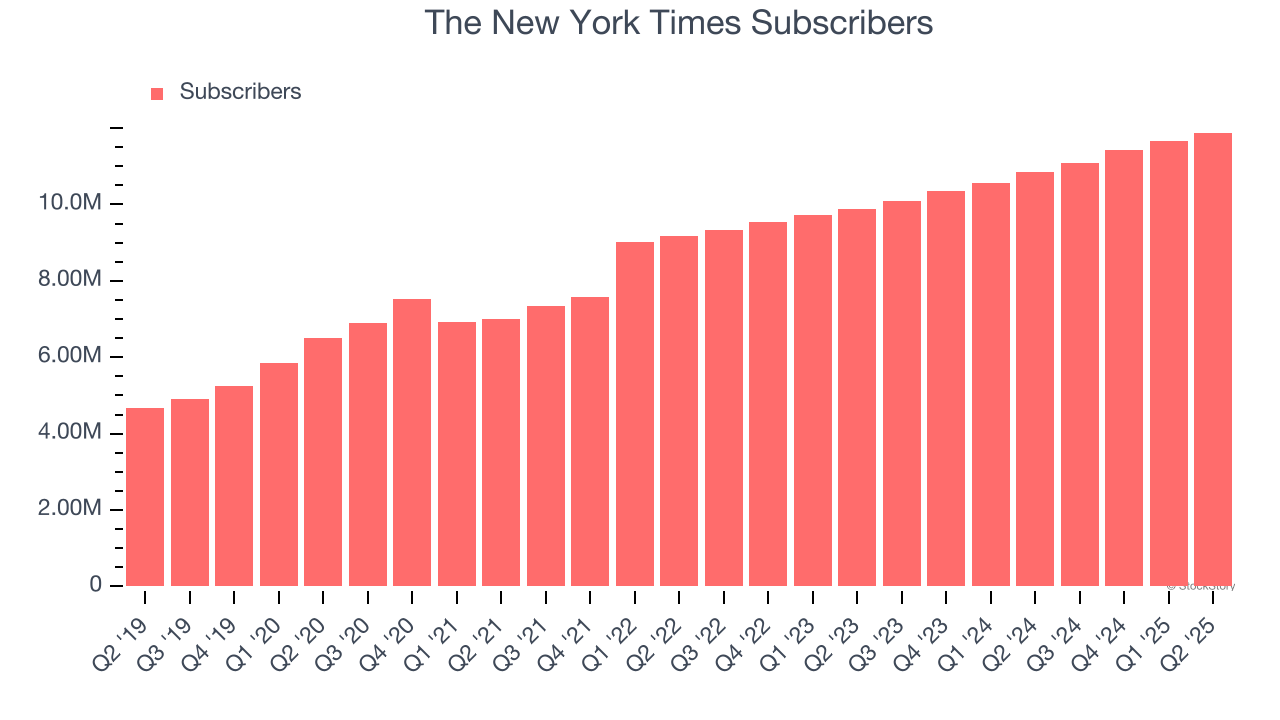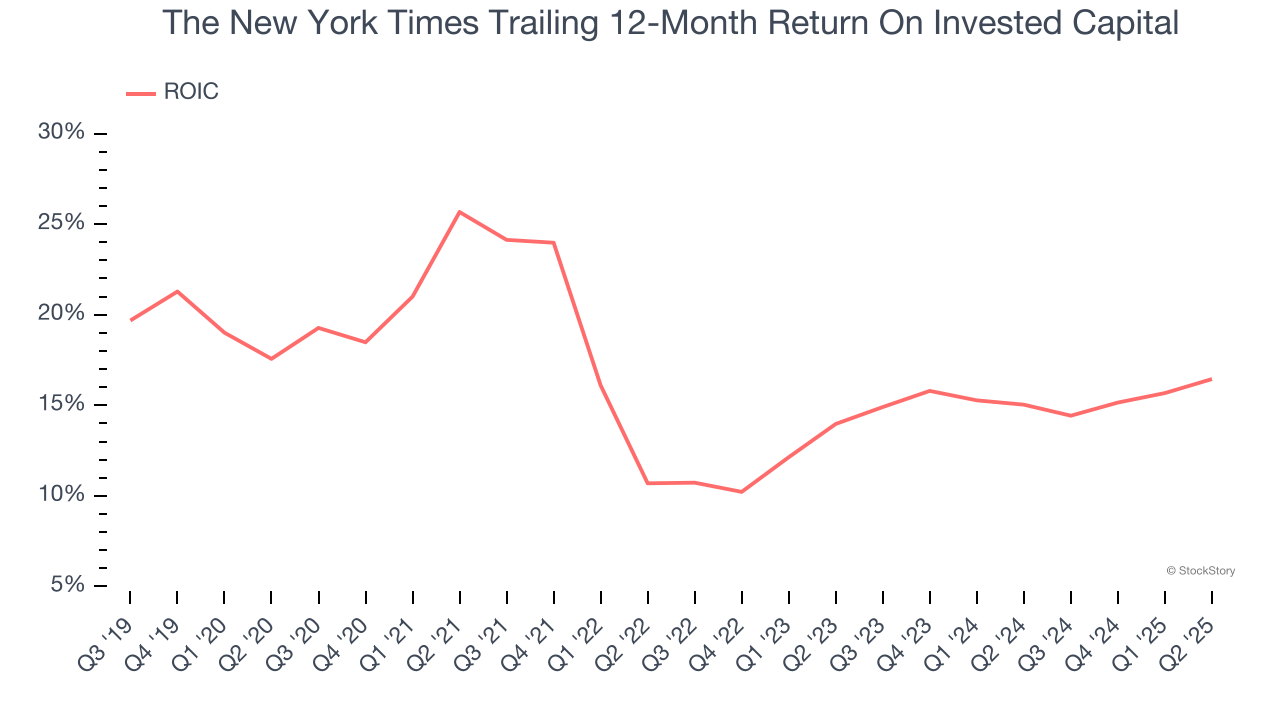
Over the past six months, The New York Times has been a great trade, beating the S&P 500 by 10.3%. Its stock price has climbed to $58.72, representing a healthy 15.7% increase. This was partly due to its solid quarterly results, and the performance may have investors wondering how to approach the situation.
Is now the time to buy The New York Times, or should you be careful about including it in your portfolio? See what our analysts have to say in our full research report, it’s free.
Why Is The New York Times Not Exciting?
We’re glad investors have benefited from the price increase, but we're swiping left on The New York Times for now. Here are three reasons why we avoid NYT and a stock we'd rather own.
1. Weak Growth in Subscribers Points to Soft Demand
Revenue growth can be broken down into changes in price and volume (for companies like The New York Times, our preferred volume metric is subscribers). While both are important, the latter is the most critical to analyze because prices have a ceiling.
The New York Times’s subscribers came in at 11.88 million in the latest quarter, and over the last two years, averaged 9.4% year-on-year growth. This performance was underwhelming and suggests it might have to lower prices or invest in product improvements to accelerate growth, factors that can hinder near-term profitability. 
2. Projected Revenue Growth Is Slim
Forecasted revenues by Wall Street analysts signal a company’s potential. Predictions may not always be accurate, but accelerating growth typically boosts valuation multiples and stock prices while slowing growth does the opposite.
Over the next 12 months, sell-side analysts expect The New York Times’s revenue to rise by 6.9%, close to its 8.5% annualized growth for the past five years. This projection doesn't excite us and indicates its newer products and services will not lead to better top-line performance yet.
3. New Investments Fail to Bear Fruit as ROIC Declines
ROIC, or return on invested capital, is a metric showing how much operating profit a company generates relative to the money it has raised (debt and equity).
We like to invest in businesses with high returns, but the trend in a company’s ROIC is what often surprises the market and moves the stock price. Over the last few years, The New York Times’s ROIC averaged 2.4 percentage point decreases each year. We like what management has done in the past, but its declining returns are perhaps a symptom of fewer profitable growth opportunities.

Final Judgment
The New York Times isn’t a terrible business, but it isn’t one of our picks. With its shares topping the market in recent months, the stock trades at 25.8× forward P/E (or $58.72 per share). At this valuation, there’s a lot of good news priced in - you can find more timely opportunities elsewhere. Let us point you toward the most dominant software business in the world.
Stocks We Would Buy Instead of The New York Times
Donald Trump’s April 2025 "Liberation Day" tariffs sent markets into a tailspin, but stocks have since rebounded strongly, proving that knee-jerk reactions often create the best buying opportunities.
The smart money is already positioning for the next leg up. Don’t miss out on the recovery - check out our Top 5 Strong Momentum Stocks for this week. This is a curated list of our High Quality stocks that have generated a market-beating return of 183% over the last five years (as of March 31st 2025).
Stocks that made our list in 2020 include now familiar names such as Nvidia (+1,545% between March 2020 and March 2025) as well as under-the-radar businesses like the once-micro-cap company Kadant (+351% five-year return). Find your next big winner with StockStory today.
StockStory is growing and hiring equity analyst and marketing roles. Are you a 0 to 1 builder passionate about the markets and AI? See the open roles here.





